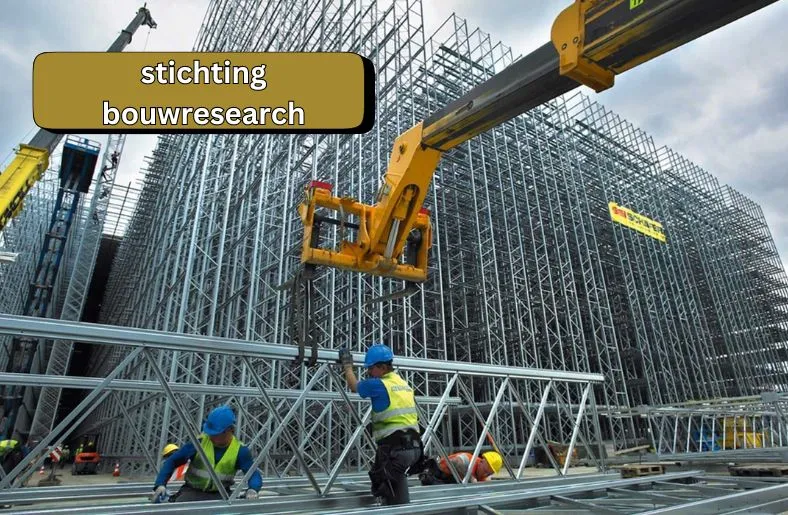Introduction
Stichting Bouwresearch is a leading name in Dutch construction. Founded in 1952, this organization has transformed the industry. It focuses on creating better, safer, and more sustainable buildings. With its innovative research, Stichting Bouwresearch sets new standards for construction practices.
In this blog post, we’ll explore how Stichting Bouwresearch is making a difference. We will look at its history, major innovations, and its impact on construction. You’ll see how this organization’s work influences not just Dutch construction, but also global practices.
Get ready to discover the role of Stichting Bouwresearch in shaping the future of building. From groundbreaking research to important partnerships, you’ll learn how this foundation drives progress and sets trends in the construction world.
History and Establishment
Stichting Bouwresearch, established in 1952, began as a response to post-war rebuilding needs in the Netherlands. The country faced significant challenges after World War II, including damaged infrastructure and outdated construction methods. To address these issues, industry leaders and the government came together to form Stichting Bouwresearch.
Initially, the organization focused on improving construction materials. Early research centered on reinforced and prestressed concrete, which was essential for rebuilding efforts. This work helped modernize Dutch construction practices and set new standards for building quality and safety.
Over time, Stichting Bouwresearch expanded its scope. The foundation began collaborating with universities, government agencies, and industry experts. These partnerships allowed for the exchange of ideas and the development of innovative construction techniques.
In 2003, under the leadership of engineer Jack de Leeuw, Stichting Bouwresearch rebranded as SBR. This new identity marked a shift towards more advanced research and modern approaches to construction. In 2013, SBR merged with CURnet to form SBRCURnet, strengthening its influence in the industry.
Despite facing funding challenges, SBRCURnet’s legacy continued through organizations like ISSO and CROW after its dissolution in 2017. Today, Stichting Bouwresearch’s impact is still felt in the construction industry. Its research and innovations have paved the way for improved building practices and sustainable development.
Pioneering Research and Innovations
Stichting Bouwresearch has led many exciting developments in construction. Their research often focuses on improving building materials. One major innovation is high-performance concrete. This new type of concrete is stronger and lasts longer. It helps create more durable and safer buildings.
Another important area is sustainable building materials. Stichting Bouwresearch has explored materials that are both eco-friendly and efficient. For example, they study recycled materials that reduce waste. They also develop insulation materials that save energy. This work helps create buildings that are better for the environment.
The foundation has also advanced construction technologies. Building Information Modeling (BIM) is a key example. BIM allows builders to plan and manage projects more effectively. It helps reduce mistakes and save time.
Stichting Bouwresearch also promotes the use of renewable energy. They support integrating solar panels and wind turbines into buildings. These technologies cut down on energy use and lower greenhouse gas emissions.
In addition, the foundation works on smart building solutions. By using sensors and Internet of Things (IoT) devices, buildings can become more efficient. Smart systems can automatically adjust lighting and heating for comfort and energy savings.
Lastly, the foundation emphasizes safety in construction. They research ways to improve building codes and safety standards. This ensures that new buildings are safe and meet high quality standards.
Overall, Stichting Bouwresearch’s innovations make construction smarter, safer, and more sustainable. Their work helps push the construction industry forward, benefiting both people and the planet.
Sustainability Focus
Stichting Bouwresearch (SBR) has always been a champion of sustainability in construction. From the beginning, the organization aimed to make building practices better for the environment. By researching new materials and methods, SBR sought to reduce waste and energy use in construction projects.
One major focus of SBR’s work is improving energy efficiency. For instance, they studied ways to make buildings use less energy for heating and cooling. This research led to the development of better insulation materials. These materials help keep buildings warmer in winter and cooler in summer, which means less energy is needed.
Another important area is reducing environmental impact. SBR explored ways to use materials that are both strong and eco-friendly. They looked into recycling old materials and using sustainable sources. This approach helps minimize the amount of waste that ends up in landfills.
SBR also worked on improving construction methods to be more sustainable. They studied how to reduce the carbon footprint of building projects. By adopting new techniques and technologies, they helped make construction more environmentally friendly.
In addition to these efforts, SBR promoted the use of green building practices. This includes designing buildings that work with the environment, not against it. Their research encouraged builders to think about how their projects affect the planet.
Overall, Stichting Bouwresearch’s focus on sustainability has made a big difference. Their work helps ensure that construction practices are not only efficient but also kind to the environment. By leading the way in these areas, SBR has set a high standard for the industry.
Collaborations and Partnerships
Stichting Bouwresearch (SBR) has always valued teamwork. By partnering with other organizations, SBR could achieve more in the construction field. These collaborations were crucial for their success.
SBR worked closely with universities. These academic partnerships brought fresh ideas and research skills. Together, they explored new building materials and methods. The universities provided scientific expertise, while SBR focused on practical applications.
Industry leaders also played a key role. By teaming up with construction companies, SBR gained real-world insights. These companies tested new ideas on actual projects. This hands-on approach helped refine and improve the research.
Government agencies were another important partner. SBR worked with them to develop better building regulations. Their joint efforts ensured that new standards were both innovative and practical. These collaborations helped shape policies that support sustainable building practices.
International connections were equally important. SBR shared knowledge with organizations in other countries. This exchange of ideas led to global advancements in construction. It also helped SBR stay at the forefront of industry trends.
Through these partnerships, SBR was able to tackle big challenges. They combined expertise from different fields to find effective solutions. This teamwork not only advanced construction practices but also set new standards for the industry.
Conclusion
Stichting Bouwresearch has played a pivotal role in advancing Dutch construction practices. Through its innovative research and dedication to sustainability, the organization has set new benchmarks in building quality, safety, and environmental stewardship. Its collaborations with universities, industry leaders, and government agencies have amplified its impact, driving progress across the construction sector. By focusing on energy efficiency, sustainable materials, and cutting-edge technologies, Stichting Bouwresearch has not only shaped Dutch construction but also influenced global practices. As we look to the future, the foundation’s legacy of innovation and collaboration continues to inspire and guide the evolution of the building industry.




